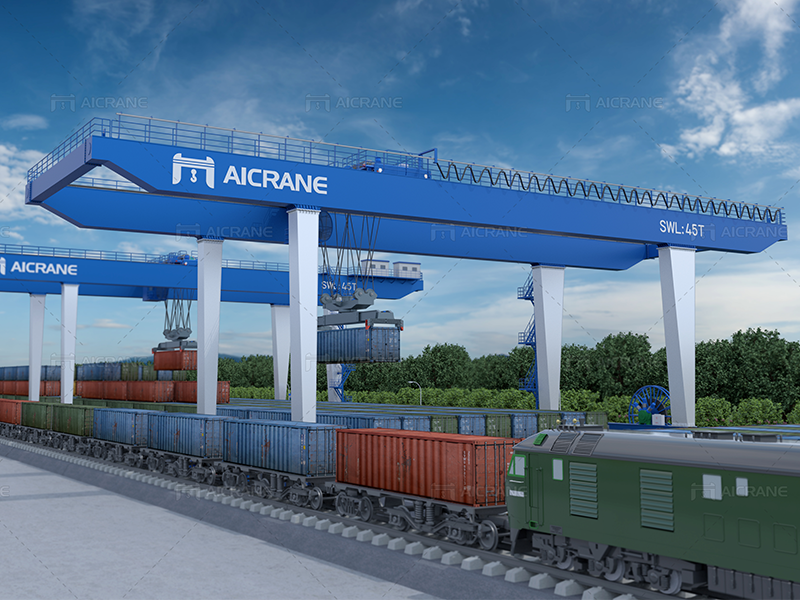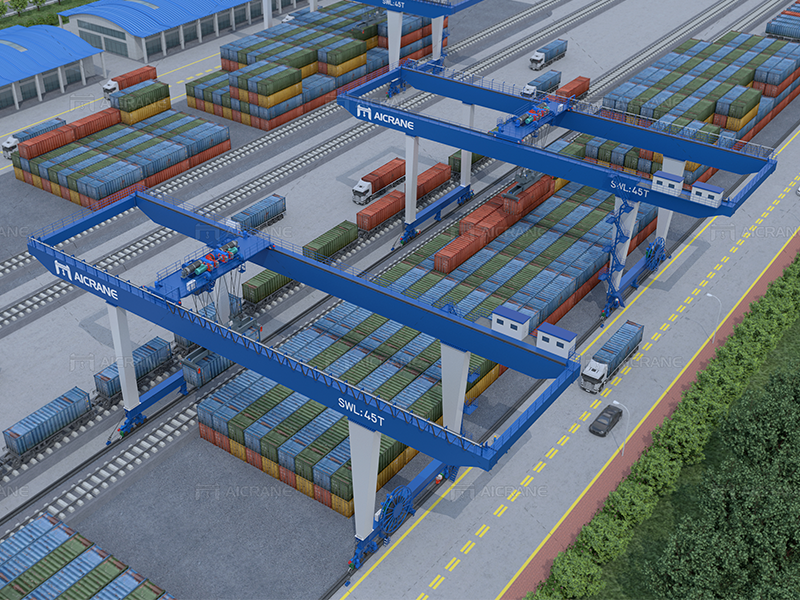Rail-mounted container gantry cranes (RMG cranes) play a pivotal role in the efficient functioning of container terminals, facilitating the seamless movement of cargo between vessels and storage areas. One crucial aspect that operators and stakeholders often contemplate is the lifespan of these robust machines. In this article, we delve into the factors influencing the lifespan of a typical rail-mounted container gantry crane, exploring design considerations, maintenance practices, and technological advancements that contribute to their longevity.

Design and Engineering:
The lifespan of a rail-mounted container gantry crane is inherently tied to its initial design and engineering. Manufacturers adhere to stringent industry standards and regulations to ensure that these cranes are built with durability and longevity in mind. The materials used in construction, such as high-strength steel, are selected for their ability to withstand the harsh environmental conditions and heavy-duty operations characteristic of container terminals.
Moreover, the structural design of the crane, including its frame, boom, and trolley, is optimized for maximum strength and stability. Engineers carefully consider factors like load distribution, stress points, and fatigue resistance during the design phase, laying the foundation for a crane with a prolonged operational life.
Operational Factors:
The actual lifespan of an RMG crane is heavily influenced by its operational environment and usage patterns. Container terminals vary in their throughput and operational intensity, impacting the wear and tear experienced by the crane components. Cranes operating in high-traffic terminals with continuous loading and unloading activities may undergo more stress compared to those in less busy facilities.
Furthermore, the type of cargo being handled can affect the crane’s lifespan. Handling heavier or irregularly shaped containers may result in increased stress on the crane’s structure and mechanical components. Regular maintenance and inspection schedules become essential to identify and address potential issues early on, minimizing the impact on the crane’s overall lifespan.

Maintenance Practices:
Maintenance practices are pivotal in determining the longevity of rail-mounted container gantry cranes. Regular inspections, preventive maintenance, and prompt repairs contribute significantly to the extension of a crane’s operational life. Terminal operators typically follow manufacturer-recommended maintenance schedules, which include tasks such as lubrication, alignment checks, and structural inspections.
Technological advancements in condition monitoring and predictive maintenance have also played a crucial role in enhancing the lifespan of RMG cranes. Integrated sensors and monitoring systems can detect anomalies in real-time, allowing operators to address potential issues before they escalate. This proactive approach not only minimizes downtime but also contributes to the overall health and longevity of the crane.
Upgrades and Retrofits:
As technology evolves, operators have the option to upgrade or retrofit certain components of rail-mounted container gantry cranes to extend their lifespan. This can involve replacing outdated control systems with more advanced automation, upgrading electrical systems for improved efficiency, or retrofitting new safety features.
By incorporating modern technologies, operators can enhance the performance and reliability of older cranes, effectively prolonging their useful life. Upgrades and retrofits are cost-effective alternatives to outright replacements and align with the industry’s sustainability goals by reducing the environmental impact associated with manufacturing new equipment.
Regulatory Compliance:
Compliance with industry standards and regulations is imperative for ensuring the safety and longevity of rail-mounted container gantry cranes. Regular assessments and inspections by regulatory bodies help identify any non-compliance issues, prompting necessary corrective actions.
Adherence to safety standards not only ensures the crane’s safe operation but also contributes to its extended lifespan. By following guidelines related to load capacities, operational limits, and environmental conditions, operators can mitigate risks and preserve the structural integrity of the crane over time.
Conclusion:
The lifespan of a rail-mounted container gantry crane is a complex interplay of design, operational factors, maintenance practices, and technological advancements. A well-designed and engineered gantry crane, coupled with diligent maintenance and periodic upgrades, can significantly extend its operational life. Terminal operators, manufacturers, and regulatory bodies must collaborate to establish and adhere to industry best practices, ensuring that these critical pieces of equipment continue to serve the global logistics industry efficiently and sustainably for many years to come.